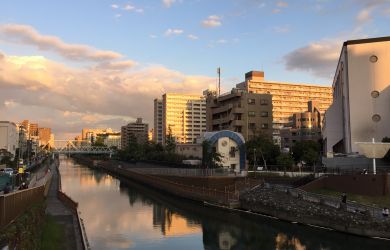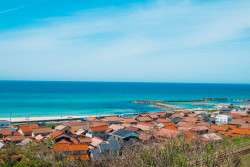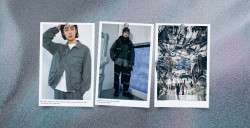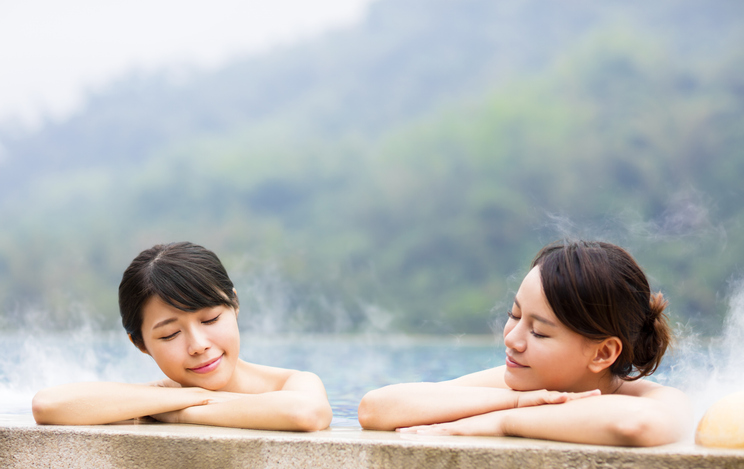
April 15, 2025
What the Japanese Bathhouse Can Teach Us About Body Image
Does it feel weird to be naked in a sento?
I spent my first twenty minutes in a Japanese bathhouse panicking in a corner, clutching a tiny towel like it could somehow turn me invisible, battling every body image insecurity I’d ever had.
It didn’t.
The truth is, nothing quite prepares you for your first trip to a sento (public bath) or onsen (hot spring). The nudity isn’t optional, and nobody cares that you’re not ready. There are no stalls, no strategic shadows, no dim lighting. Just rows of low stools, communal tubs and a quiet but unshakable confidence radiating from the regulars.
It was brutal—at first. But it’s also where I unlearned a lifetime of body shame.
Japanese Bathhouses are a Body-Neutral Zone
You walk in, strip down, wash thoroughly and then soak. It’s not revolutionary—but what is different is the total absence of self-consciousness. No one’s comparing sizes, scars, shapes or skin. The rules in the bathhouse are simple: be clean, be quiet and don’t splash. That’s it.
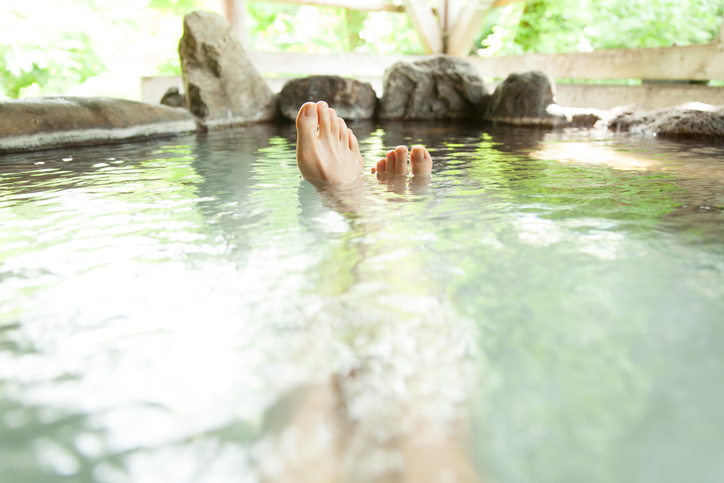
Also, just to clear up a common worry—men’s and women’s bathing areas are completely separate. Unless it’s a rare mixed-gender bath, konyoku, which generally requires bathing suits or towels.
In the U.S., locker rooms always felt like silent battlegrounds. Towel choreography, side glances, sucking in your gut like you were bracing for impact. Here? Nobody’s performing. It’s like you left your ego in the shoe locker.
Naomi, 21, from Tokyo, studied abroad in California and described the jarring shift from sento culture to the pressure of beach-ready bodies in the U.S. “When you grow up going to the bathhouse, you just see everyday people in normal bodies in everyday settings. It’s not about being ‘beach body ready.’ You see kids, old people, teenagers—generations all bathing together. So even before you get formal sex education, you’ve already seen how different bodies look and change.”
That casual, early exposure makes a difference. And that’s the thing: you do feel exposed, but not in the way you might expect. There’s no judgment in those foggy mirrors. No one’s looking. Everyone’s just being.
Nakedness Isn’t Always Vulnerability
Somewhere around visit three, something clicked. I stopped walking with my arms crossed. I stopped turning my back to the room. The bathhouse taught me something no Instagram therapist ever could: When you stop hiding your body, you stop hiding from yourself.
It wasn’t about confidence—it was about neutrality. I wasn’t suddenly proud of my thighs or excited about the curve of my stomach. I just… didn’t think about it. That silence was more powerful than praise.
Communal Bathing Shifts Body Perception
The body diversity in a bathhouse is real. Elders with surgical scars, women with postpartum bellies, teenagers, athletes, salarywomen. And not one of them apologized for being there. No self-deprecating jokes. No efforts to shrink. Just bodies doing what bodies do—getting clean and relaxing.
Aoi, 26, grew up in Chiba and remembers visiting her local sento regularly as a child. “If you don’t have the opportunity to see normal people naked, then you’re going to compare yourself to models or adult videos, which leads to insecurity,” she told me. “But going to the Japanese bathhouse from a young age taught me a lot about body image, I saw that there are so many different bodies so I never really felt insecure.”
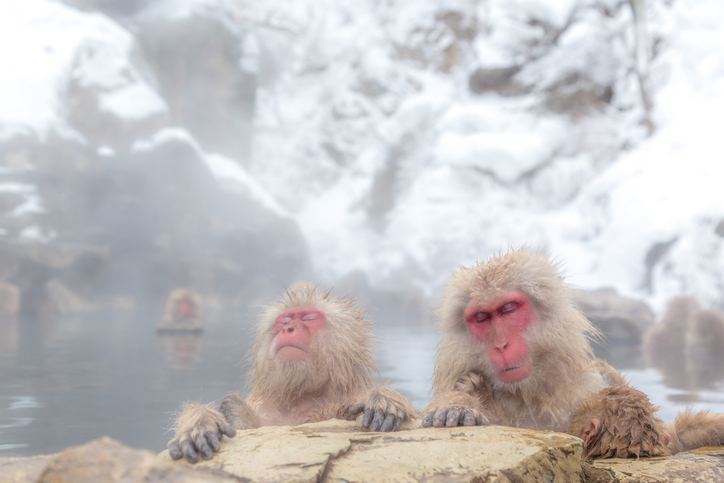
In a media landscape that rarely shows unfiltered bodies, growing up around real ones matters. It reframes what normal looks like. And being surrounded by people who are unapologetically at ease in their skin makes you question why you ever weren’t. We think insecurity is personal, but so much of it is really about isolation.
What I’d Tell Anyone Nervous to Go
Bring a washcloth, tie up your hair, and if you feel awkward—know that’s normal. But don’t let it stop you. You’ll probably be the only one worried about your body.
Choose a quiet local sento for your first time (places like Bunka Yokusen in Ikejiri-Ohashi or Kairyo-yu in Ebisu are mellow and tattoo-friendly!). Skip weekends. Avoid tourist-heavy onsen resorts at first. Read the rules ahead of time in our step-by-step sento guide and embrace the ritual: sit, scrub, soak, breathe. The longer you stay, the more it becomes about the water, not the worry.
For more of our favorite spots, check out our list of tattoo-friendly sento with saunas in Tokyo. Or, check out this amazing tattoo-friendly guided onsen experience in Tokyo.
Body Neutrality is a Practice
It’s not about loving your body every day. Honestly, that’s a tall order. What I learned in the bathhouse is that it’s enough to simply exist without critique. To stop narrating your reflection. To let your body be a vessel instead of a project.
That perspective followed me. I started wearing whatever I wanted to, without the internal drama. Stopped editing photos into oblivion. Even stopped avoiding mirrors.
The bathhouse didn’t change my body. But it absolutely changed the way I live in it.
